
Planetary Picture of the Day
Week of September 30, 2024
Let's tour the solar system, featuring Venus, Earth, Mars, and the moon's Europa and Triton.
Monday, 30 September 2024
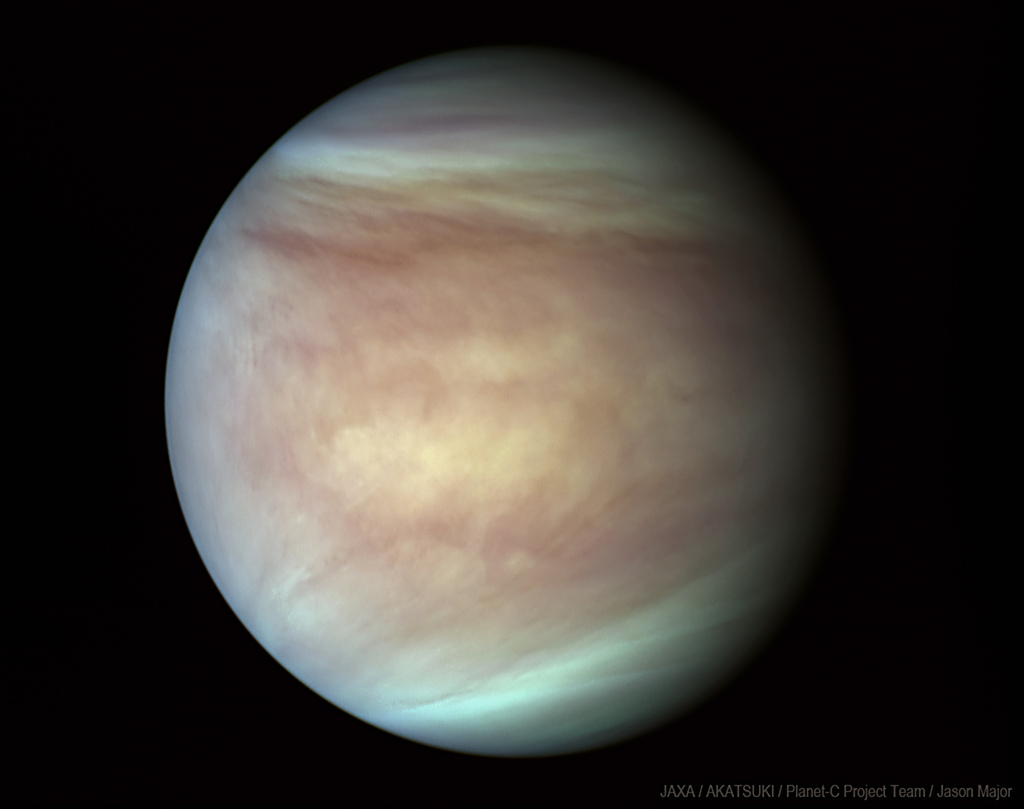
Venus
A view of Venus from image data captured by JAXA's AKATSUKI spacecraft in ultraviolet and infrared wavelengths on April 25, 2016, from about 80,000 km away. Unfortunately, JAXA lost contact with AKATSUKI at the end of May this year.
Tuesday, 1 October 2024
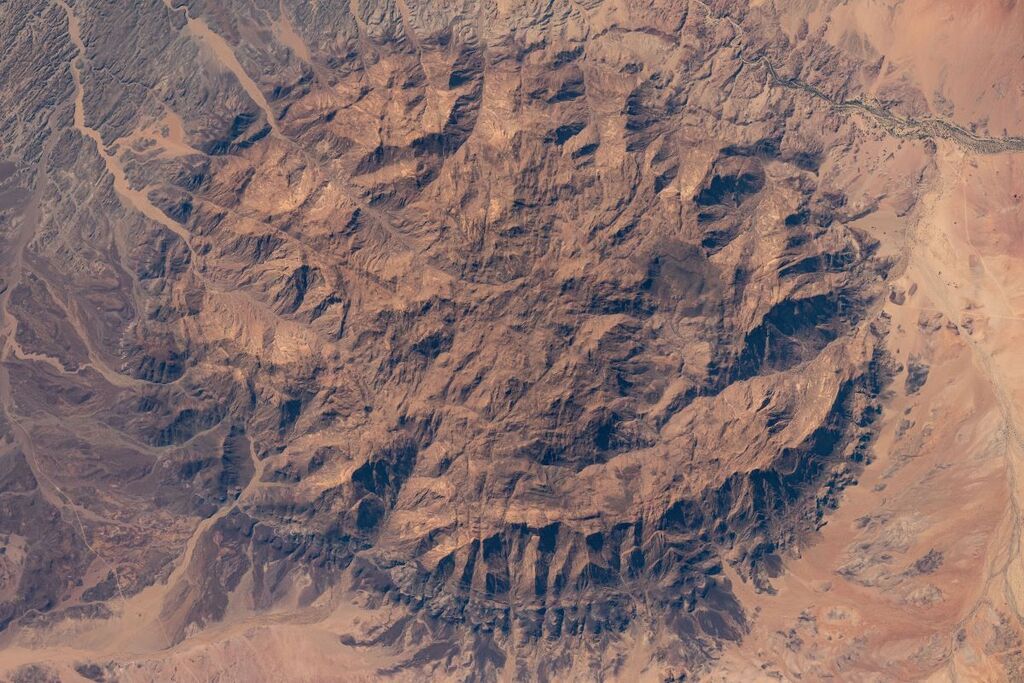
Brandburg Massif
The dome-shaped Brandburg Massif, near the Atlantic coast of central Namibia, containing Brandberg Mountain, the African nation’s highest peak and ancient rock paintings going back at least 2,000 years, is pictured from the International Space Station as it orbited 261 miles above.
Wednesday, 2 October 2024
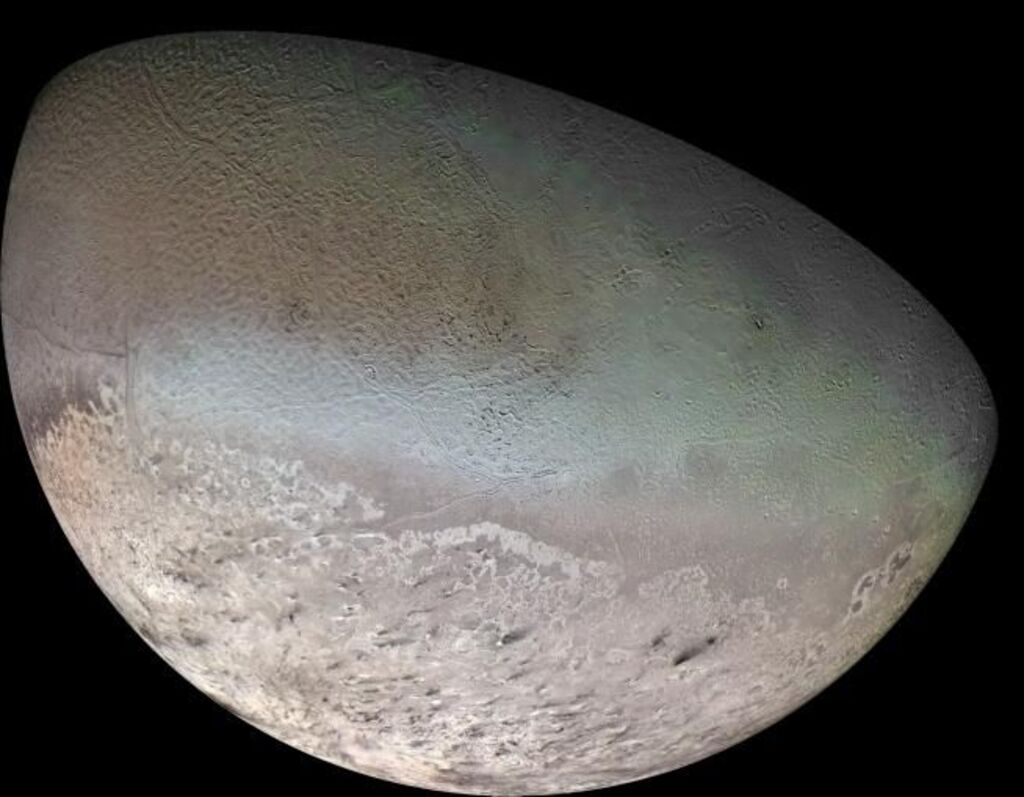
Global Color Mosaic of Triton
This global color mosaic of Triton was taken in 1989 by Voyager 2 during its flyby of the Neptune system. With a radius of 1,350 km, about 22% smaller than Earth's moon, Triton is by far the largest satellite of Neptune. It is one of only three objects in the Solar System known to have a nitrogen-dominated atmosphere (the others are Earth and Saturn's giant moon, Titan).
Triton has the coldest surface known anywhere in the Solar System (38 K, about -391 degrees Fahrenheit); it is so cold that most of Triton's nitrogen is condensed as frost, making it the only satellite in the Solar System known to have a surface made mainly of nitrogen ice.
The pinkish deposits constitute a vast south polar cap believed to contain methane ice, which would have reacted under sunlight to form pink or red compounds. The dark streaks overlying these pink ices are believed to be icy and perhaps carbonaceous dust deposited from huge geyser-like plumes, some of which were found to be active during the Voyager 2 flyby. The bluish-green band in this image extends around Triton near the equator; it may consist of relatively fresh nitrogen frost deposits. The greenish areas include the "cantaloupe" terrain, whose origin is unknown, and a set of "cryovolcanic" landscapes apparently produced by icy-cold liquids (now frozen) erupted from Triton's interior.
Thursday, 3 October 2024
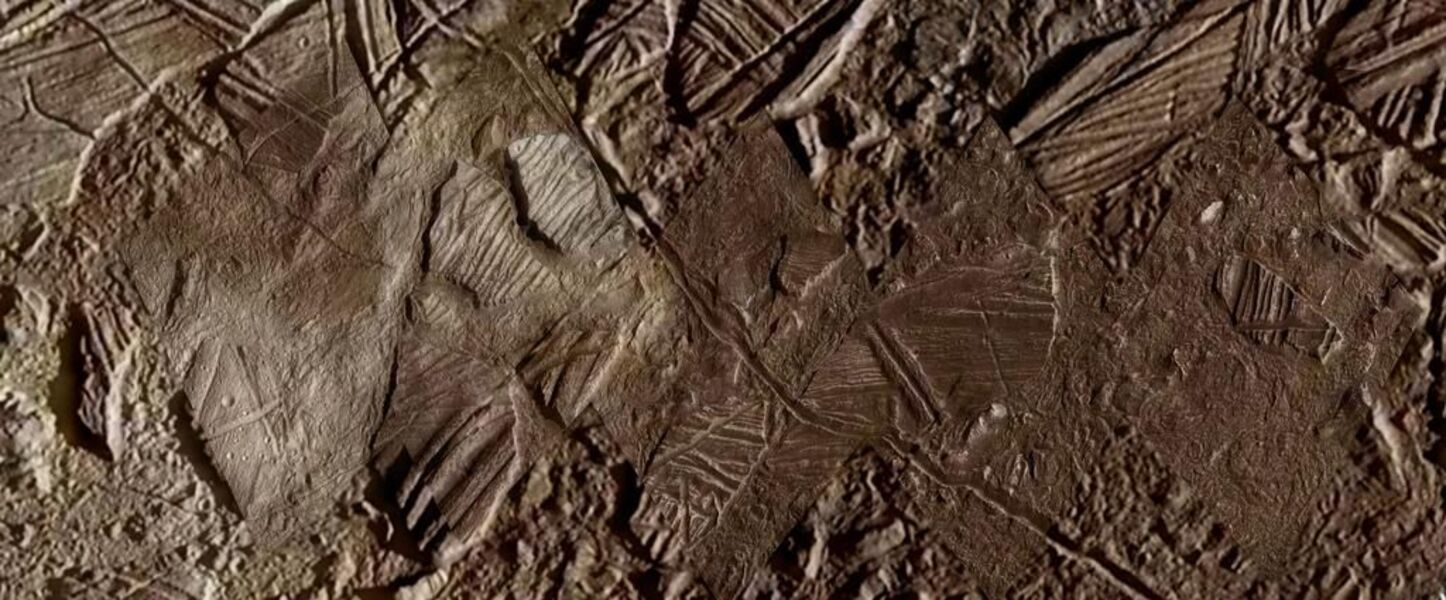
Conamara Color Closeup
This image shows a close-up view of terrain within the region of #Europa's surface named Conamara. This region sports ice rafts that look like those at Earth's poles, where large chunks of ice break away and float freely on the ocean. Much of the region bears the reddish/brownish discoloration seen here – the same as seen along many of Europa's fractures. Scientists believe this material may contain clues about the composition of an ocean beneath the icy surface if it is proven to exist.
Friday, 4 October 2024
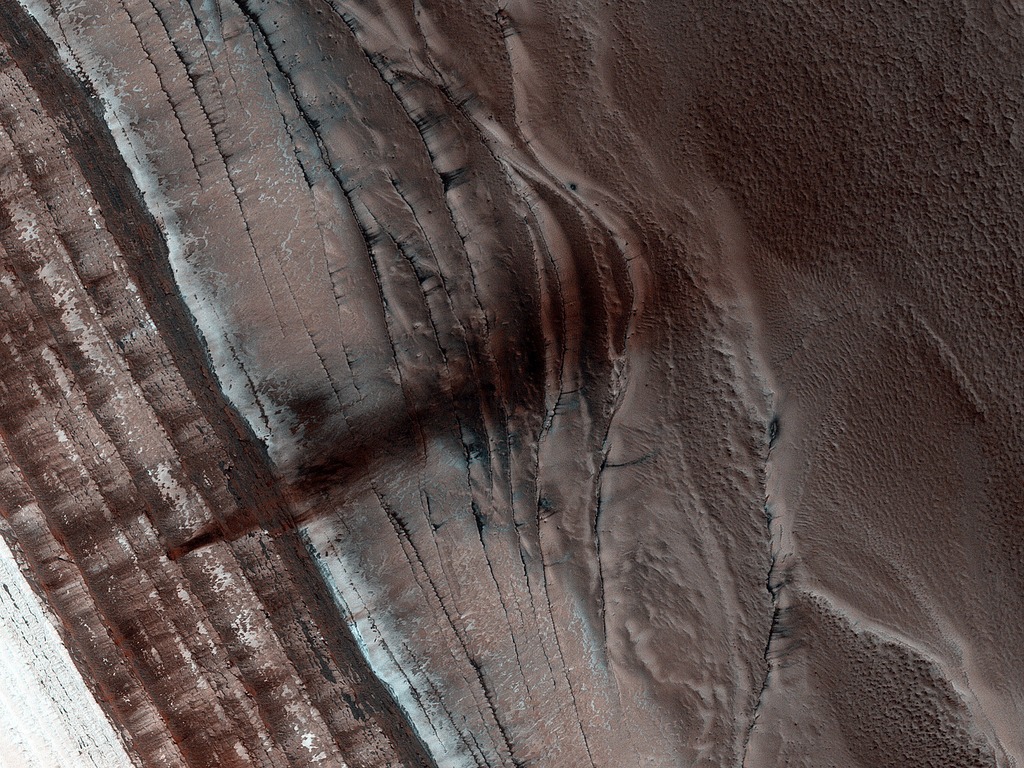
Spring Slide
The North Polar region of Mars is capped with layers of water ice and dust, called the “polar layered deposits.” This permanent polar cap is covered in the winter with a layer of seasonal carbon dioxide ice.
When the sun rises in the spring, the steep edges of the polar layered deposits are the first to warm up. The dry ice sublimes (going directly from a solid to a gas) and destabilizes loose chunks perched on the steep cliff. Material from the weaker layers gets dislodged and cascades down the steep slope.
Here, we can see a dark streak marking the path of that loose material, approximately 1 kilometer wide. HiRISE images often show avalanches in progress in the springtime along the edge of the polar layered deposits in this area.





